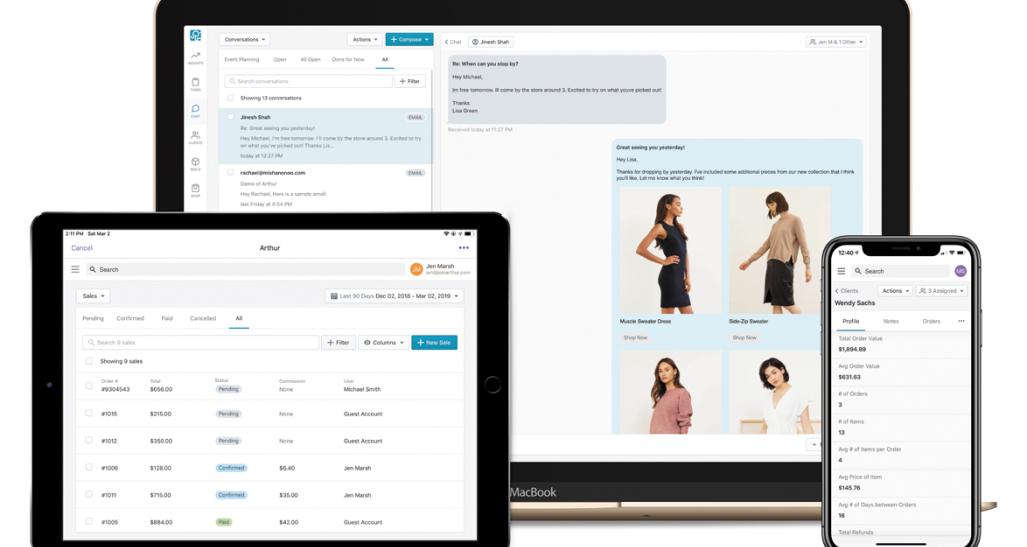
The rise of ecommerce has shifted the retail landscape significantly over the years, but it’s still taking brands some time to cope with all of the changes. Many of today’s technology offerings focus on the ecommerce space, but “outbound retailing” platform Endear is intended to boost physical stores.
“It’s about allowing stores to be more data driven,” says co-founder Leigh Sevin. “It’s about understanding what associates were doing on a day-to-day basis, and how that resulted in impacting their sales.”
Originally launched as a consumer platform, Endear began by helping customers work with freelance stylists. Along the way, the team realized store associates were diligent in nurturing customer relationships, but they didn’t have access to the right technology to drive consistent results in those efforts.
“For so long they had been on their own in terms of tools and resources,” Sevin says. “They were building these very high-touch relationships with customers, but no one had formalized that procedure and empowered them to do this.” Rather than watch store staff continue on the journey alone, the team behind Endear shifted its focus, intent on helping make customer relationship development a more collaborative effort.
“Retailers integrate their ecommerce and point-of-sale into Endear so their associates can access all of that information through our platform,” Sevin says. The system works on any device and gives store associates the tools to be more proactive, providing them with a more structured and productive way to reach out to customers.
Where staff used to keep a notebook with customer information tucked away and use personal phones to maintain engagement, Sevin says, “Now they can segment that into a more data-driven degree to determine who they want to target.” Using Endear’s centralized messaging capabilities and its power of scale, associates can reach out over text and email, sharing product images and setting up lookbooks for customers. The platform enables a level of personalization that, while typically done well through ecommerce channels, can be missing in stores.
Retailers can gain important benefits by deploying Endear; the platform gives brands a way to find new opportunities through outbound retailing by using associates’ off-peak hours to do additional marketing. Normal lulls in traffic no longer need to translate into lost productivity if staff can continue selling even when the store is slow.
“They can use those people to help market the location, to bring people back at a later date or to drive traffic to the website,” Sevin says. The focus turns to bringing shoppers into the store rather than simply waiting for them to visit. In an increasingly omnichannel world, Endear also provides a way to attribute sales to individual stores, regions or to a brand’s online presence. “Whether they come back in store or they go online, we can show the retailer how that customer was brought to them,” Sevin says.
High turnover rates are another recurring issue for many retailers, and the resulting negative impacts of employee churn may be lessened with Endear. Instead of watching a customer relationship walk away when a key associate leaves, those connections can instead be retained by the brand, along with the customer’s data and longer-term loyalty. “If an associate moves on, the retailer can hold onto that customer and keep the same level of personalization and communication,” Sevin says.
Though Endear got its early traction in areas such as affordable luxury and high-end fashion where sales associates were already doing a good bit of outbound retailing, Sevin thinks every type of retailer could see a benefit from the technology. “Customers are always looking for personalized content that’s relative to them, and your associates are best equipped to understand those needs and address them effectively.”
Julie Knudson is a freelance business writer who focuses on retail, hospitality and technology.